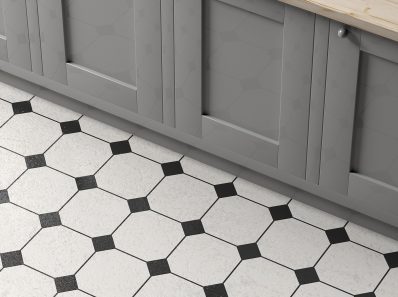From Fiberglass to Foam: A Comparative Guide to Insulation Choices
When you first envision a cosy home or an energy-efficient office, insulation might not immediately spring to mind. Yet, it’s the insulation that’s often the silent guardian, warding off the biting cold or the sweltering heat, ensuring that indoor environments remain pleasant. But with a plethora of insulation choices available, which one should you go for? From gypsum ceilings to more advanced fire protection system, let’s embark on a comparative journey of insulation choices.

Fibreglass: The Veteran Player
When it comes to insulation, fibreglass stands tall as a tried and tested solution. Originating from minuscule glass fibres woven together, it is often seen encased within pink or yellow batts. Here’s an in-depth look:
- Cost-effective: For homeowners and businesses operating on a tight budget, fibreglass stands out as a beacon. It offers reasonable thermal insulation properties at a fraction of the cost of newer insulation types. This affordability has led to its widespread usage across the UK and other parts of the world.
- Versatile Application: One of fibreglass hallmark features is its adaptability. Whether you’re looking to insulate an attic, wall cavities, basements, or even suspended ceiling, fibreglass can be cut and adapted to fit a variety of spaces. Moreover, its R-value (a measure of thermal resistance) makes it a suitable choice for diverse climates.
- Fire-resistant Properties: Fibreglass inherently resists burning, making it a preferred choice in regions where fire safety is a priority. While it may not replace a dedicated fire protection system, it certainly augments fire safety measures.
Drawbacks: Handling fibreglass requires care. The tiny glass shards can irritate the skin, eyes, and respiratory system. It’s advisable to use protective wear during installation.
Foam Insulation: The Flexible Innovator
Emerging as a formidable player in the insulation arena, foam insulation, particularly spray foam, boasts of attributes that many homeowners and businesses find alluring.
- Air-tight Seal: Foam insulation has this uncanny ability to expand and fill gaps, rendering spaces virtually air-tight. This is invaluable, especially in regions with extreme temperature fluctuations. With such sealing, heating and cooling systems work more efficiently, leading to tangible energy savings.
- Superior Moisture Barrier: In places prone to humidity or rainfall, moisture infiltration can be a nemesis, paving the way for mould, mildew, and structural damage. Foam insulation acts as a bulwark against such moisture invasion, ensuring interiors remain dry.
- Impressive Longevity: When installed properly, foam insulation boasts of an exceptional lifespan. It remains undeterred by the ravages of time, continually offering optimal insulation.
Drawbacks: Foam insulation typically comes with a heftier price tag compared to fibreglass. Additionally, its installation demands a professional touch, further adding to the costs.

Gypsum Ceilings: More Than Just Aesthetic
Though often prized for their aesthetic charm, gypsum ceilings encapsulate more than meets the eye. They weave together beauty with functionality.
- Acoustic Comfort: For those vexed by the cacophonies of urban life or simply seeking acoustic sanctity, gypsum ceilings come to the rescue. Their composition and density impede the free flow of sound, ensuring ambient noises are kept at bay.
- Fire-Resistant Qualities: While gypsum ceilings aren’t a substitute for a comprehensive fire protection system, they aren’t mere sitting ducks in the face of flames. The water molecules within gypsum release steam when exposed to high temperatures, thereby delaying the spread of fire.
- Effortless Integration: For those mulling a suspended ceiling setup, gypsum boards seamlessly blend in. Their adaptability is noteworthy, catering to diverse design preferences and architectural nuances.
Drawbacks: Gypsum ceilings, while sturdy, aren’t immune to water damage. In areas with persistent moisture issues, proper sealing and waterproofing become imperative.
Other Factors to Consider When Choosing Insulation
Building Age and Condition: The age of a building can influence the type and amount of insulation required. Older structures might have minimal or deteriorated insulation, calling for more intensive insulation solutions. The condition of the building’s existing insulation, walls, and roof should also be evaluated.
- Historical Buildings: These may have specific guidelines on what materials can be used to preserve their integrity.
- Deterioration: Older insulation materials might have settled or degraded, reducing their efficiency.
Health and Safety Concerns: Different insulation materials can have various health implications:
- Volatile Organic Compounds (VOCs): Some insulations release VOCs that can affect indoor air quality.
- Allergens: Materials like fiberglass can irritate the skin and respiratory system.
- Toxicity: It’s essential to know if an insulation material is toxic, especially when exposed to fire.
Environmental Impact: Sustainability is a growing concern. When selecting insulation, consider:
- Recycled Content: Some insulations are made, in part, from recycled materials.
- Longevity: Materials that don’t degrade quickly can be more eco-friendly in the long run.
- Production Process: The environmental footprint of producing the insulation material.
Ease of Installation: While some insulation types can be a DIY project, others might require professional installation. It’s also worth considering how disruptive the installation process might be, especially if the building is occupied.
Cost Implications: While upfront costs are a factor, consider long-term savings:
- Energy Savings: Efficient insulation can lead to significant energy savings over time.
- Maintenance Costs: Some insulation types might require periodic checks or maintenance.
- Resale Value: Proper insulation can boost the value of a property.
Compatibility with Other Building Systems: Insulation might interact with other systems in a building:
- HVAC: Proper insulation can reduce the load on heating and cooling systems.
- Electrical Systems: Consider if the insulation material is conductive or poses any risks.
- Plumbing: Ensure insulation won’t negatively impact pipes, especially in colder climates where there’s a risk of freezing.
Aesthetics and Space: For visible areas, how the insulation looks might be important. Additionally, some insulation materials might be bulkier than others, which could influence decisions, especially in tighter spaces.
Future-proofing: Technology and building standards evolve. Choosing insulation that’s versatile or can easily be augmented can be beneficial as future needs change.
Decisions – Turning to Galaxy Insulation
Choosing the right insulation isn’t merely about picking a product off a shelf. It’s a strategic decision, intricately linked to the building’s energy efficiency, safety, and comfort levels. Galaxy Insulation, with its wealth of experience and extensive product range, stands ready to guide you. From recommending the perfect fire protection system to assisting with gypsum ceilings and suspended ceiling choices, they’re more than an insulation provider – they’re your insulation partner.
Connect with Galaxy Insulation today and make your space not only energy-efficient but also safe and comfortable.
Author Bio:
Cinthia Rosa
As an Insulation Expert at Galaxy Insulation and Dry Lining, UK, Cinthia’s contribution to the company’s growth has been invaluable. She has amassed abundant knowledge and technical know-how regarding insulation products, which she consistently shares with the masses through engaging and informative blogs.



